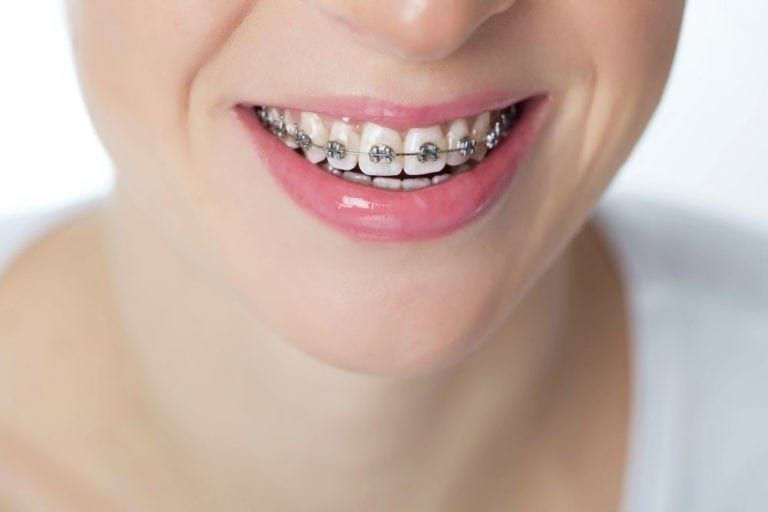Braces or Veneers? Choosing the Best Solution for a Perfect Smile
- dclinicdubai
- Mar 28
- 3 min read
A confident smile can transform your appearance and boost self-esteem, but achieving that perfect set of teeth requires the right treatment. Two of the most popular options for improving dental aesthetics are braces and veneers. While both offer remarkable results, they serve different purposes and suit different dental concerns. If you're considering dental braces in Dubai, it's important to understand how they compare to veneers in terms of effectiveness, longevity, and overall benefits.

1. Understanding Braces:
Braces are orthodontic devices designed to correct misaligned teeth, bite issues, and jaw irregularities. They gradually shift teeth into their ideal positions using brackets, wires, and sometimes elastic bands. Braces can treat severe misalignment, crowded teeth, overbites, underbites, and gaps, making them a comprehensive solution for long-term dental health and aesthetics.
2. Understanding Veneers:
Veneers are thin shells, typically made of porcelain or composite resin, that are bonded to the front surface of teeth. They are used to enhance the appearance of teeth by improving their shape, color, and alignment. Unlike braces, veneers do not move teeth but instead conceal imperfections such as discoloration, minor misalignment, chips, or gaps, providing an instant transformation.
3. Treatment Duration:
Braces require a longer treatment time, usually ranging from 12 to 24 months, depending on the severity of misalignment. The process involves gradual adjustments to ensure precise alignment. Veneers, on the other hand, offer immediate results and can be completed within two to three dental visits, making them a faster option for those seeking quick cosmetic enhancements.
4. Suitability for Different Dental Issues:
Braces are ideal for correcting functional and structural dental issues, including significant misalignment, bite irregularities, and overcrowding. Veneers are best suited for cosmetic improvements, such as covering stains, minor gaps, or slightly crooked teeth. Those with major alignment problems may require braces first before considering veneers for additional aesthetic refinement.
5. Impact on Natural Teeth:
Braces work with the natural structure of the teeth, repositioning them without altering their surface. Veneers require a thin layer of enamel to be removed before bonding, making the procedure irreversible. This enamel removal ensures a proper fit and long-lasting adhesion, but it also means that the teeth will always need veneers or some form of restoration in the future.
6. Maintenance and Longevity:
Braces require regular adjustments and meticulous oral hygiene to prevent plaque buildup around the brackets. Once the treatment is complete, retainers are needed to maintain results. Veneers, although low maintenance, may need replacement every 10 to 15 years due to wear or chipping. Proper care, including avoiding excessive force or staining foods, can extend their lifespan.
7. Cost Considerations:
The cost of braces varies based on the type (metal, ceramic, lingual, or clear aligners) and the complexity of the case. Veneers tend to be more expensive per tooth but offer immediate aesthetic improvements. Those looking for a long-term functional solution may find braces more cost-effective, while individuals seeking a quick cosmetic enhancement may prefer investing in veneers.
8. Comfort and Aesthetic Preferences:
Braces, especially traditional metal ones, may cause initial discomfort and affect speech or eating habits. Clear aligners offer a more discreet and comfortable alternative. Veneers, being non-invasive after placement, provide an instantly improved smile without any adjustment period. Those prioritizing aesthetics during treatment may opt for aligners or veneers over visible braces.
9. Orthodontic vs. Cosmetic Goals:
Braces primarily focus on long-term orthodontic health, ensuring that teeth are correctly aligned for improved function and bite stability. Veneers cater to aesthetic concerns, offering an instant solution for a flawless smile without addressing underlying alignment or bite issues. Individuals with both functional and cosmetic concerns may benefit from a combination of treatments.
10. Making the Right Choice:
Choosing between braces and veneers depends on the individual's dental condition, goals, and budget. Braces are the best option for correcting misalignment and bite problems, ensuring a healthier foundation. Veneers provide an excellent solution for those who already have well-aligned teeth but wish to enhance their appearance. Consulting a qualified dental specialist will help determine the most suitable approach based on personal needs and expectations.
Final Thoughts:
Both braces and veneers offer unique advantages, catering to different dental concerns and aesthetic goals. If you require orthodontic correction, dental braces in Dubai provide a long-lasting solution for proper alignment and improved oral health. However, if you are looking for a quick cosmetic enhancement, veneers can deliver immediate results. Understanding the differences between these treatments will help you make an informed decision and achieve the perfect smile you desire.


Comments